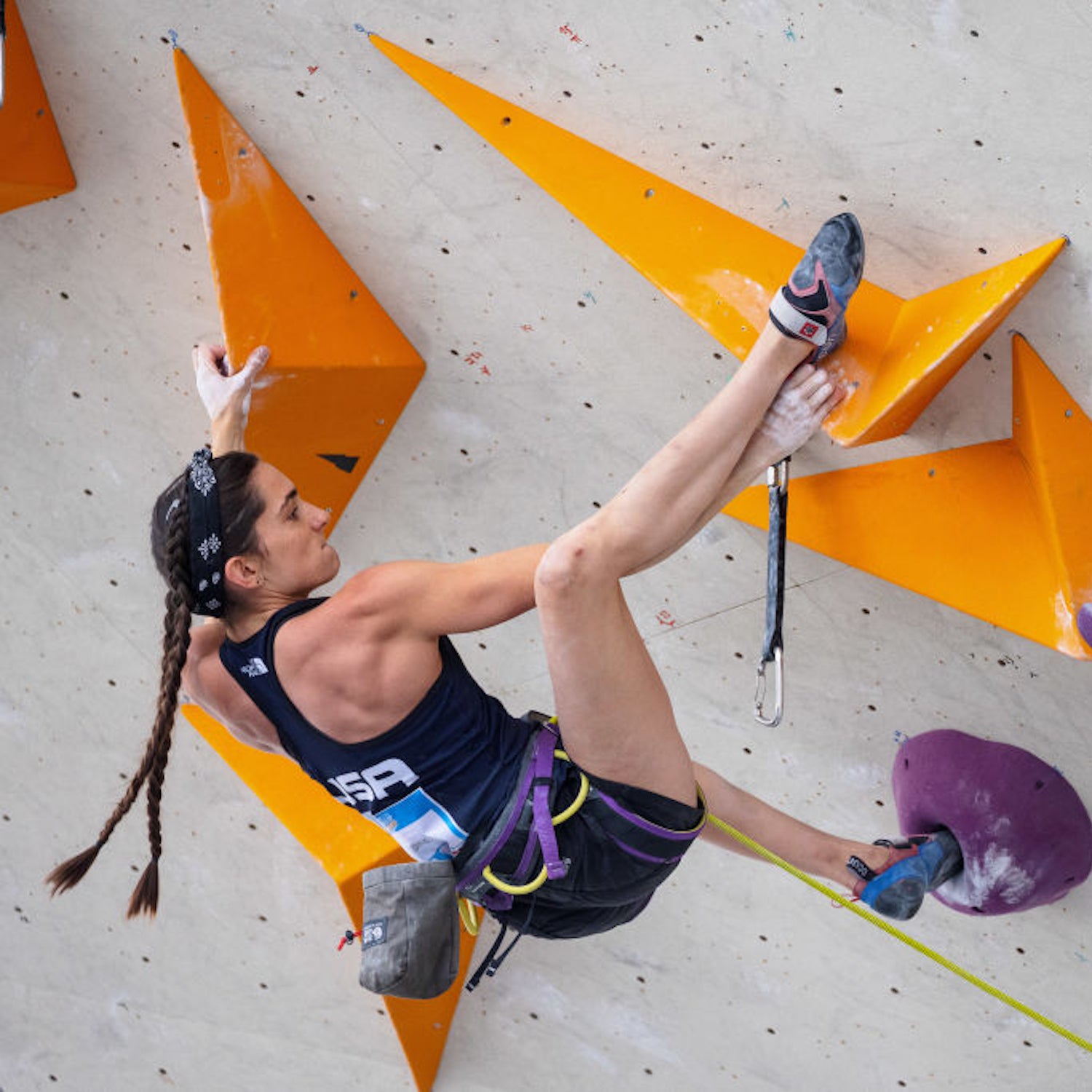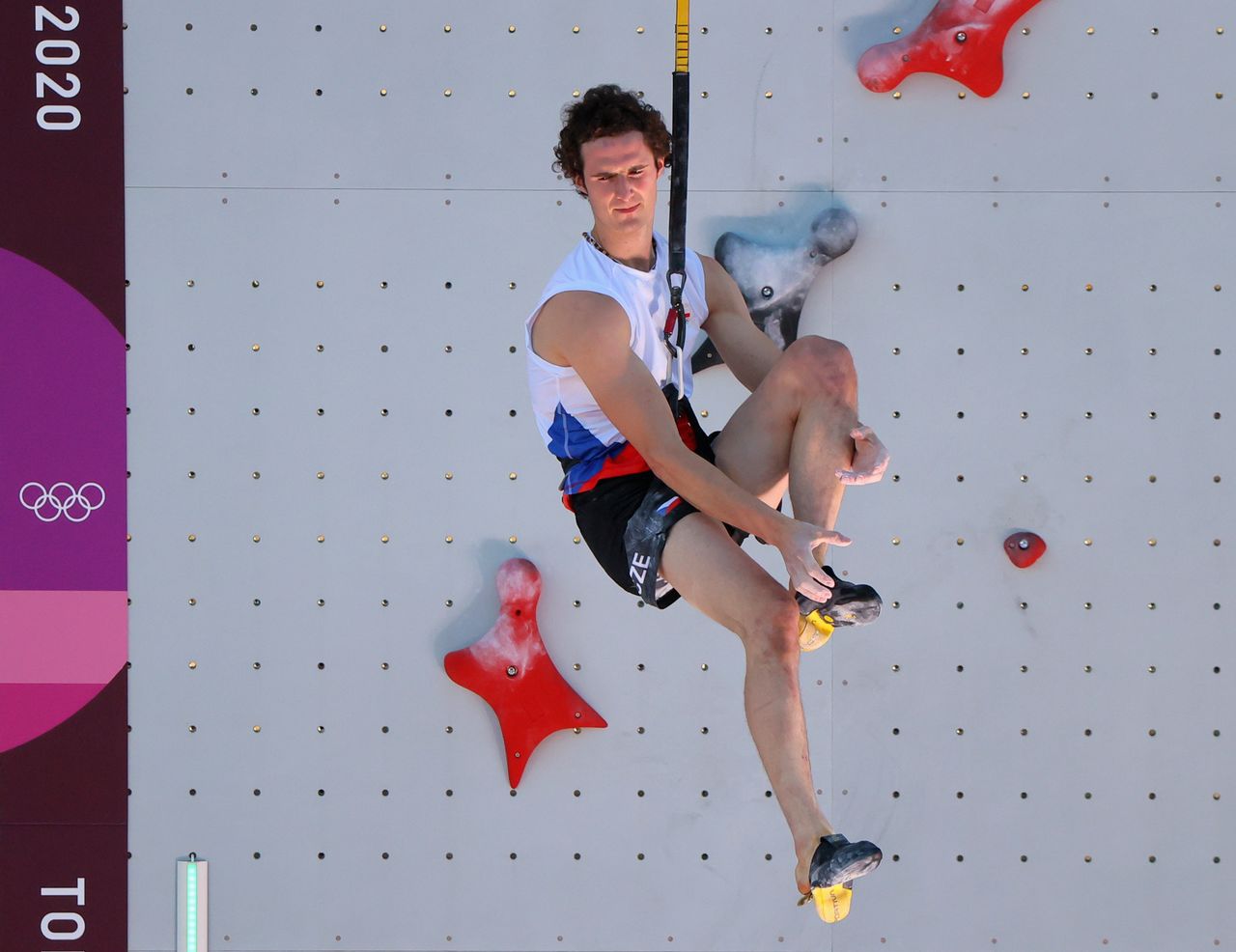The Rise of Sport Climbing in the Olympics

Sport climbing, a thrilling and physically demanding activity, has captivated enthusiasts worldwide for decades. Its inclusion in the 2020 Tokyo Olympics marked a significant milestone, propelling the sport to new heights of global recognition and participation.
The History of Sport Climbing
Sport climbing emerged in the 1980s as a distinct discipline within the broader realm of climbing. Early practitioners sought to push the boundaries of technical climbing, developing innovative techniques and routes on natural rock faces. As the sport gained popularity, dedicated climbing gyms began to sprout up, offering controlled environments for training and practice. This accessibility fostered a wider audience, attracting climbers of all skill levels and backgrounds.
Inclusion in the 2020 Tokyo Olympics, Sport climbing combined olympics google
The International Olympic Committee (IOC) officially recognized sport climbing as an Olympic discipline in 2016, paving the way for its debut at the 2020 Tokyo Games. This decision reflected the sport’s growing popularity, its technical complexity, and its potential to engage a global audience.
The Disciplines of Sport Climbing
Sport climbing encompasses three distinct disciplines: lead climbing, bouldering, and speed climbing.
- Lead Climbing: This discipline involves ascending a pre-set route on a vertical wall, using ropes and safety equipment. Climbers must navigate challenging holds and movements, relying on strength, agility, and strategic planning. The goal is to reach the highest point on the route within a designated time limit.
- Bouldering: Bouldering focuses on short, intense climbs on low walls without ropes. Climbers use their strength and coordination to solve intricate sequences of moves, often involving dynamic jumps and acrobatic maneuvers. The challenge lies in finding the optimal path and executing the moves flawlessly.
- Speed Climbing: As its name suggests, speed climbing emphasizes rapid ascents. Climbers race against the clock to reach the top of a standardized wall, using specialized techniques and equipment designed for speed. The focus is on explosive power, precision, and efficient movement.
Combined Format for the Olympic Event
The Olympic sport climbing event incorporated all three disciplines, creating a unique and challenging format. Each athlete competed in all three disciplines, with their overall ranking determined by a combined score. This format aimed to showcase the versatility and athleticism of sport climbers, while also providing a compelling and dynamic competition.
Impact of the Olympics on Sport Climbing
The inclusion of sport climbing in the Olympics has had a profound impact on the sport’s popularity and growth.
- Increased Participation: The global spotlight on sport climbing has ignited a surge in participation, particularly among young athletes. Climbing gyms worldwide have witnessed a significant increase in membership, with new facilities opening to meet the growing demand.
- Media Exposure: The Olympics provided unprecedented media exposure for sport climbing, introducing it to a vast audience unfamiliar with the sport. Television broadcasts, online streaming, and social media coverage have helped to raise awareness and inspire a new generation of climbers.
- Global Recognition: The Olympic platform has elevated sport climbing to a global level, fostering international competition and collaboration. National climbing federations have strengthened their programs, and athletes have access to greater resources and support.
Notable Athletes
The Olympic sport climbing event featured a diverse cast of talented athletes who captivated audiences with their skill, determination, and athleticism.
- Janja Garnbret (Slovenia): Garnbret, a dominant force in the sport, showcased her exceptional climbing skills and consistency, winning the gold medal in the combined event. She has been a consistent top performer in all three disciplines, setting numerous world records and winning multiple world championships.
- Alberto Ginés López (Spain): Ginés López, a young and dynamic climber, made history by becoming the first Olympic gold medalist in the men’s combined event. His impressive performance across all three disciplines highlighted his versatility and composure under pressure.
- Tomoa Narasaki (Japan): Narasaki, a bouldering specialist, brought a unique style and technical brilliance to the competition. His innovative moves and ability to solve complex problems captivated spectators and contributed to his silver medal finish.
The Future of Sport Climbing in the Olympics

The inclusion of sport climbing in the Tokyo 2020 Olympics marked a significant milestone for the sport, catapulting it onto the global stage. This inclusion has undoubtedly ignited a wave of excitement and interest, paving the way for a promising future for sport climbing in the Olympic Games. The sport’s dynamic nature, thrilling competition, and captivating spectacle have captured the imagination of audiences worldwide.
Potential Changes to the Format or Disciplines
The current Olympic format, a combined event encompassing bouldering, lead climbing, and speed climbing, offers a comprehensive test of climbers’ skills. However, as sport climbing continues to evolve, it is plausible that the Olympic format might undergo adjustments to reflect the evolving landscape of the sport.
The introduction of new disciplines, such as para-climbing or the incorporation of specific climbing styles, such as traditional climbing, could add further depth and diversity to the Olympic competition. These changes would not only enhance the spectator experience but also showcase the breadth and versatility of sport climbing.
The Potential for Increased Popularity and Recognition
The Olympic platform provides an unparalleled opportunity for sport climbing to reach a wider audience and garner greater recognition. The Games’ global reach and exposure have the potential to spark a surge in participation and interest in the sport, particularly among young athletes.
The success of sport climbing in the Tokyo Olympics has already demonstrated the sport’s ability to captivate viewers and generate excitement. With continued participation in the Games, sport climbing can leverage this momentum to cultivate a dedicated fan base and establish itself as a mainstream sport.
Challenges and Opportunities
While the future of sport climbing in the Olympics appears bright, it is not without its challenges. One key challenge lies in ensuring the sport’s accessibility and inclusivity. The expense of training facilities and equipment can pose a barrier for aspiring athletes, particularly in developing countries.
However, the Olympic platform also presents opportunities for sport climbing to address these challenges. The increased visibility and funding associated with Olympic participation can be leveraged to promote grassroots development programs and provide greater access to resources for athletes from diverse backgrounds.
Key Differences Between the Olympic Format and Traditional Sport Climbing Competitions
The Olympic format, while offering a comprehensive test of climbing skills, differs significantly from traditional sport climbing competitions in several key aspects. Here’s a table highlighting these differences:
| Feature | Olympic Format | Traditional Sport Climbing Competitions |
|---|---|---|
| Disciplines | Combined (Bouldering, Lead, Speed) | Bouldering, Lead, Speed, or combinations thereof |
| Competition Structure | Individual, Combined Event | Individual or Team, Specific Discipline |
| Scoring System | Combined Score based on each discipline | Discipline-specific scoring based on factors like time, height, and attempts |
| Route Setting | Standardized, with a focus on diverse skillsets | Variable, reflecting the specific discipline and competition style |
| Equipment | Standardized, with specific regulations | Variable, based on discipline and competition rules |
The Impact of Google on Sport Climbing: Sport Climbing Combined Olympics Google

Google has played a significant role in the growth and accessibility of sport climbing, influencing both the way climbers find information and the way the sport is promoted and enjoyed. Its search engine, mapping tools, and data analysis capabilities have revolutionized how climbers connect with the sport and how the community engages with it.
Google Search and Online Resources
Google’s search engine has become an indispensable tool for climbers, providing access to a vast repository of information about climbing gyms, outdoor climbing areas, gear reviews, technique guides, and news related to the sport. Google’s algorithms prioritize relevant and authoritative websites, ensuring that climbers can find reliable and up-to-date information.
- Climbers can search for specific climbing gyms or outdoor areas using s like “climbing gym near me,” “bouldering gym in [city name],” or “outdoor climbing areas in [region name].”
- Google Search also provides access to online resources like climbing forums, blogs, and websites dedicated to climbing technique, gear reviews, and event information.
- The “People Also Ask” feature on Google Search can help climbers find answers to common questions about climbing, such as “What is the best climbing rope for beginners?” or “How do I find a climbing partner?”
Google Maps and Navigation
Google Maps has become an essential tool for climbers, allowing them to easily locate and navigate to climbing gyms and outdoor climbing areas. Its detailed maps, real-time traffic updates, and street view feature provide climbers with a comprehensive understanding of their surroundings, making it easier to plan trips and find the best routes.
- Climbers can use Google Maps to find the nearest climbing gym or outdoor area, including details such as address, phone number, opening hours, and user reviews.
- Google Maps also allows climbers to create and share custom maps of their favorite climbing spots, including specific routes, parking locations, and access points.
- The Street View feature on Google Maps provides climbers with a visual preview of climbing areas, allowing them to assess the terrain and accessibility before visiting.
Google Trends and Sport Climbing Popularity
Google Trends is a valuable tool for analyzing the popularity and growth of sport climbing over time. By tracking search queries related to sport climbing, Google Trends provides insights into the trends, interests, and geographic distribution of climbers worldwide.
- Google Trends data shows a significant increase in search queries related to sport climbing in recent years, indicating growing interest and participation in the sport.
- By analyzing search trends, climbing organizations and businesses can identify popular climbing areas, gear preferences, and emerging trends in the sport.
- Google Trends can also help climbers find popular climbing destinations and understand the seasonality of climbing activities in different regions.
Relevant Google Search Terms and Phrases
- General Terms: sport climbing, climbing, rock climbing, bouldering, indoor climbing, outdoor climbing, climbing gym, climbing routes, climbing gear, climbing shoes, climbing rope, climbing harness.
- Disciplines: lead climbing, sport climbing, bouldering, trad climbing, aid climbing, competition climbing.
- Locations: [city name] climbing gym, [region name] climbing areas, [mountain name] climbing routes, [country name] climbing destinations.
- Gear: climbing shoes, climbing rope, climbing harness, belay device, quickdraws, chalk bag, climbing helmet.
- Technique: climbing technique, climbing knots, belaying techniques, lead climbing techniques, bouldering techniques.
Sport climbing combined olympics google – The thrill of sport climbing, combined with the Olympic stage, is a captivating spectacle. It’s a reminder of the human spirit’s drive to push boundaries, much like the legacy of the Indian motorcycle , a symbol of American ingenuity and adventure.
Just as the motorcycle navigates challenging terrain, so too do climbers conquer vertical challenges, showcasing the power of human determination and grace.
Watching sport climbing at the Olympics is a thrilling experience. The athletes’ strength and agility are truly inspiring. And just like a well-worn Wassily chair, these climbers are constantly striving to refine their technique, even replacing worn-out equipment with high-quality gear.
Replacing the leather on a Wassily chair is a way to keep the chair in top shape, just like how climbers invest in new shoes and ropes. The sport climbing community, like the world of vintage furniture restoration, is all about passion, dedication, and pushing limits.